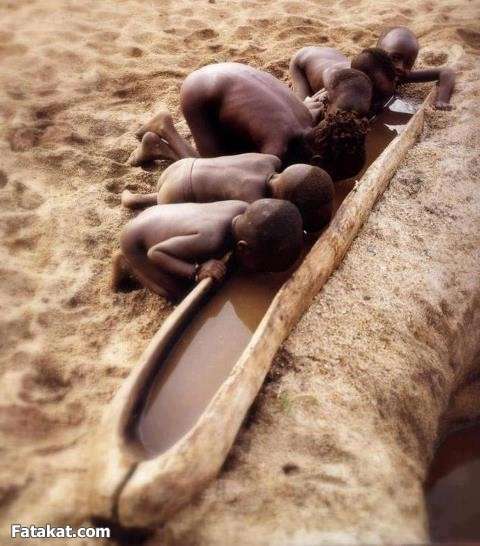
Privatisation of water systems : crime against humanity
water privatisation: end an experiment that has failed
Cheap sales, debt and foreign takeovers: how privatisation changed the water industry
ABSTRACT
This article emphasises the importance of water resources, which are vital to the sustenance of life. Water is essential for various reasons: for drinking, for personal hygiene, for cooking, for watering crops, for cleaning our homes etc. One can therefore conclude that, without this vital resource, there is no life. It is for this reason that God, giver of life, gave water as a gift – free – both to humanity and to the rest of creation, so that we may all achieve fullness of life. This article challenges the fact that, because of the insistence of the World Bank and the International Monetary Fund on the privatisation of water supplies where the poorest of the poor are unable to pay, these people are cut off from water supplies and are deprived of the right to the fullness of life. The author emphasises that there is no life without water, that water resources are a gift from the creator and should therefore be made accessible to all, rich and poor alike.
INTRODUCTION
The well-known statement 'No water – no life' is significant in the life of all living things on earth. Water is accepted as the basis of life on the planet (Jeremiah 2007:2). Nothing on this earth has life without water. Water was in existence even before life:
In the beginning of creation, when God made heaven and earth, the earth was without form and void, with darkness over the face of the abyss, and a mighty wind that swept over the surface of the water.-(Gn 1:1–2)
The most serious event that can befall life on earth is the absence of water. Many people therefore equate rainfall to 'a sign of God's favour and goodness' (Marshall et al. 1980:1317) and the absence of rainfall to a curse. Water is a basic requirement, the absence of which spells death. Water is used to symbolise this in various ways, as is spelt out later in this article. Christians see water as God's blessing, as spiritual refreshment. In his book, the prophet Jeremiah described God as the fountain of living waters: 'Two sins have my people committed: they have forsaken me, a spring of living water . . .' (Jr 2:13)
Water is highly significant throughout the Bible. It is sacred and central to many ceremonial rituals, such as feet washing and religious sacraments like baptism. Priests, for example, were washed with water during their consecration. The Levites as well as the chief priests also went through the ceremonial removal of defilement through the use of water, as recorded in the book of Ezekiel:
I will sprinkle clean water upon you, and you shall be clean from all your uncleanness, and from all your idols I will cleanse you. A new heart I will give you, and a new spirit I will put within you; and I will remove from your body the heart of stone and give you a heart of flesh. I will put my spirit within you.-(Ezk 36:25–27)
Water is good; it gives life. Water is also feared, however, because it can bring disaster and catastrophe to human life and property, to the environment – to the whole of creation – if not well managed. An example of this can be drawn from the biblical drowning of the Egyptians in the Red Sea and, much more recently, from the 2004 tsunami and Hurricane Katrina of 2005.
Some of the most technologically advanced countries depend on electrical energy derived from water for industry. This energy is renewed through the water cycle, which helps to keep water flowing. Through this, we have. . . the water from the oceans and other exposed bodies being evaporated by the sun, formed into clouds, returned to earth as precipitation, and then flowing] once again from the high ground into the ocean . . .(Friedman 1982:343)
The movement of water is therefore critical; it enhances the importance of the life-giving element of water.
BIBLICAL UNDERSTANDING OF WATER
Water is a symbol of life. In the book of Genesis, the Bible affirms water as the cradle of life, an expression of God's grace in perpetuity for the whole of creation. It speaks of 'the spirit of God moving above the waters' (Gn 1:2). Water is a basic condition for all life on earth (Gn 1:2ff) and it is to be preserved and shared for the benefit of all creatures and of the wider creation. Water is the source of health and of well-being and it requires responsible action from us as human beings, as the partners in and the priests of creation (Rv 22:1ff)...Continue to read
A Bill of Rights for Clean Water

Photo:bing.com
“The protection of our shared environment has long been among government’s most fundamental responsibilities. Ancient Rome’s Code of Justinian, one of the first efforts at constitutional governance, guaranteed to all citizens the use of the “public trust” or “commons” — those shared resources that cannot be reduced to private property, including the air, water, forests and fisheries. Throughout Western history, the first acts of tyrants have invariably included efforts to deliver public-trust assets into private hands. During the Dark Ages, when Roman law broke down in England, King John attempted to sell off the country’s fisheries, place navigational tolls on England’s rivers, and seize its woodlands and game animals. Enraged at that theft of public-trust assets, England’s people confronted John at Runnymede in 1215, forcing him to sign the Magna Carta. That seminal democratic document included a powerful articulation of the principle that the commons of water, fisheries and woodland were not commodities to be bartered away by a prince, but the rightful property of all citizens.
These public-trust rights passed to the people of the United States following the American Revolution. Each state constitution recognized the rights of every citizen to use the commons, but never in a manner to injure its use and enjoyment by others.
The early conservation movement enacted laws to protect fish, wildlife, shorelines, lakes and rivers, and created our first national parks and secured vast tracts of land against exploitation and abuse. As late as 1913, the U.S. Supreme Court declared that it was “inconceivable that public-trust assets could slip into private hands.” Indeed the best measure of how a democracy succeeds is how it safeguards the shared assets as trustee for all citizens, rich and poor. Does it maintain the commons in the hands of the people or does it allow public trust assets to be privatized in the hands of the wealthy and powerful? During the Gilded Age of corporate feudalism, naked power brokering by industrial robber barons persuaded courts and legislatures to weaken public trust rights and allow the theft of clean air and water and public lands from the American people.
As the Industrial Revolution gave way to the post-World War II industrial boom, Americans found themselves paying a high price for the resulting pollution. The wake-up call came in the late 1960s, when scientists declared Lake Erie dead, Cleveland’s Cuyahoga River caught fire and radioactive strontium 90 appeared in the breast milk of mothers across North America and in the most remote corners of the globe. On the first Earth Day in 1970, the accumulation of such insults drove 20 million Americans to the streets in the largest public demonstration in U.S. history.
By making government and industry more transparent on the local level and giving the public a voice in allocation of the commons, those laws strengthened our democracy. Powerful corporate polluters would finally be held accountable for privatizing the commonwealth — those planning to use the commons would have to disclose the environmental impacts of their project and submit to public hearings; new laws gave citizens the power to prosecute environmental crimes. Even the most vulnerable Americans could participate in the decisions that determined the future of their communities. The passage of these statutes marked the return of these centuries-old rights of the commons to every American.
The victory was short-lived, however. Earth Day 1970, and the popular citizen’s movement it helped spark, may have caught polluters and their indentured servants in our political system off guard, but over the next 30 years, they mounted an increasingly sophisticated and aggressive counterattack to undermine the new laws. Today, corporate polluters and their money have infiltrated every level of our political system. Lobbyists for polluters now run most of the regulatory agencies charged with protecting Americans from pollution. Among other things, White House policies have drastically diminished federal controls of mercury, which now contaminates most American fishes, weakened controls on storm water and sewage pollution, agricultural waste and mountaintop mining, and subverted wetlands protection.
These rollbacks have encouraged the destruction and pollution of thousands of miles of rivers and streams, beaches and other waterways. Environmental injury threatens all of our national values. It undermines the rule of law, threatens our public health and national security, promotes corporate rather than local control and shatters the democratic concept of stewardship of our shared resources. It shows contempt for America’s historical ties to wilderness and the American traditions of responsibility, resourcefulness and commitment to community. That same pollution is both immoral and un-American. Our battle is a battle for the wellspring of our national values, for the idea of community, and for all the things that make us proud of our country. Law enforcement does not just punish lawbreakers or force polluters to stop polluting. It moves the milestones of public morality, stigmatizes lawbreakers as bad citizens, and helps restore the moral order.
Mothers Against Drunk Driving (M.A.D.D.), another grassroots advocacy group, successfully demonstrated those critical functions of law enforcement during the 1980s. Back then, drunk driving was illegal in every state, but the law was seldom vigorously enforced and police officers only occasionally arrested the intoxicated driver. Oftentimes, they simply told the drunk to “pull over and sleep it off.” Society winked at the practice. Roadside stores sold cup holders to make it easier for a driver to drink beer and drive. Because the law wasn’t taken seriously, tens of thousands of Americans died in drunk driving accidents. A grassroots law enforcement effort by M.A.D.D. changed everything. M.A.D.D. helped establish zero tolerance of drunk driving as a national law enforcement standard and put teeth into laws already on the books. Strict enforcement quickly changed the public tolerance for drunk driving. Most young Americans no longer consider drunk driving something to wink at or joke about. They will tell you, in so many words, that people who drink and drive are not just breaking the law — they are sociopaths. That moral stigma has made our streets safer for all Americans.
In the United States, corporate CEOs whose companies pollute are seldom stigmatized socially. They are feted at banquets and continue to appear on social rosters and podiums with politicians. The anemic fines imposed on polluters are seen as a cost of doing business. Companies like Exxon, the Southern Company, Massey Coal, Doe Run and Smithfield Foods routinely violate state and federal laws.
And yet, in nearly every instance, they not only escape serious punishment, colleagues applaud them for their business cunning. Outside the United States, a different attitude prevails. In European countries, where environmental laws are strictly enforced, company owners caught polluting become social pariahs. Right now, we need leaders in Washington who will stop pandering to criminals and once again make government stand for the rule of law. We must force our politicians and business leaders to place the public good over private gain, principle over politics, conscience over expediency.
We need to end this age of lawlessness and begin the complex and difficult task of restoring the rules that safeguard the public trust and our national treasures devastated by plunder.”
This article was first published in Green Money
We can’t engineer our way out of an impending water scarcity epidemic
By Zoe Schlanger, Environment Reporter, Quartz
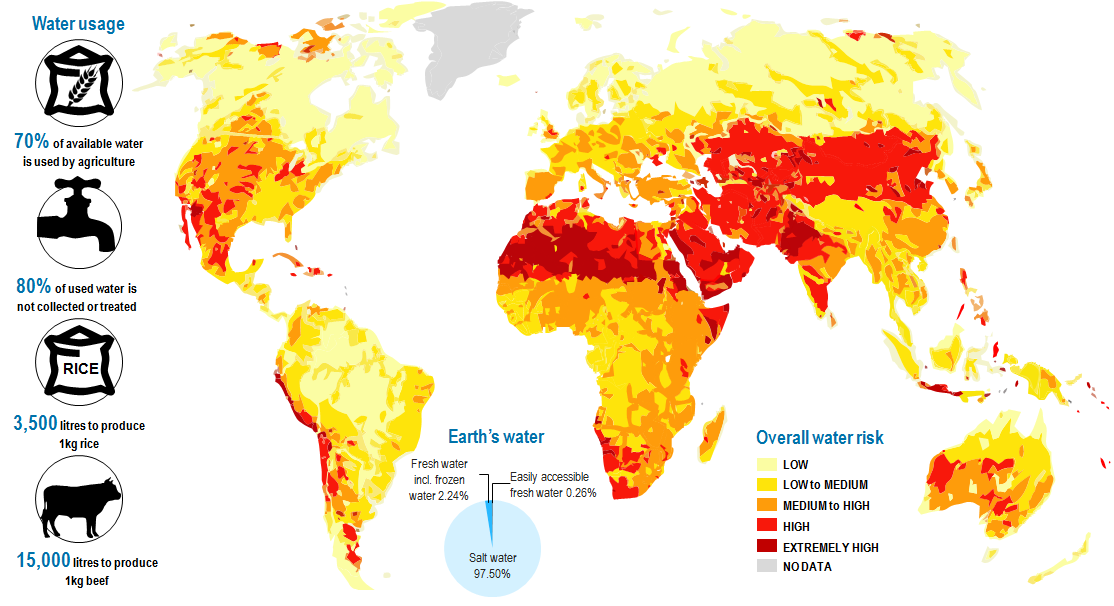
'The map above illustrates water risks in the world through an indicator measuring risks related to quantity, quality and access.
Water risk is an increasingly important global theme and does not only concern poor and water-stressed countries. Areas from California to south-eastern Spain and Australia have experienced acute episodes of drought, groundwater depletion and environmental change that have strained water resources.'- Source: World Resource Institute, UN, FAO, Standard Chartered Research
Modern water infrastructure is a lot of concrete: dams, canals, reservoirs. But as the world warms and population grows, those old approaches won’t be enough to stave off drinking-water catastrophe, according to a 100-page United Nations report released this week. Humanity will have to start embracing techniques that mimic natural processes.
“For too long, the world has turned first to human-built, or ‘grey,’ infrastructure to improve water management. In so doing, it has often brushed aside traditional and Indigenous knowledge that embraces greener approaches,” Gilbert Houngbo, the chair of UN Water, wrote in the preface to the report.
Global demand for water is expected to increase by nearly one-third by 2050, according to the UN. Meanwhile, climate change is making wetter regions wetter, leading to more flooding which in turn hobbles water infrastructure, and dry regions are getting drier, imperiling water supplies. Two-thirds of forests and wetlands have been lost or reduced since 1900, according to the UN, and since the 1990s, water pollution has worsened in almost all rivers in Africa, Asia and Latin America; both of these trends mean even less of the precious little freshwater on the planet is available for use.
Already, an estimated 3.6 billion people live in places where access to water isn’t guaranteed for at least one month every year, according to the UN. By 2050, that number could grow to as much as 5.7 billion.
Mimicking nature
“Nature-based solutions” include things like protecting and installing wetlands to soak up flood waters, rehabilitating degraded soils so they can retain more water, recharging groundwater aquifers, and the widespread adoption of farming practices that manage soil so it retains as much rain water as possible.
Many of these methods align closely with the ways indigenous people have historically managed watersheds, but which have also been ignored in favor of industrial-scale interventions, like dams. The UN report urges countries to recognize the efficacy of indigenous approaches.
Indigenous people currently “care for an estimated 22% of the Earth’s surface, and protect nearly 80% of the remaining biodiversity on the planet, while representing only close to 5% of the world’s population,” according to the report. Biodiversity is vital to nature-based solutions to the water crisis; it “underpins ecosystem processes,” the UN writes. A loss of biodiversity of trees and plants make forests less stable and less resilient to storms and disease, which could ultimately threaten the contribution of forests to distributing the water supply and preventing runoff. The same is true when it comes to agriculture; a loss of biodiversity in the fields leads to depleted soils that can no longer hold water.
But indigenous voices have long been shut out from urban and rural planning, and from basic social services. To truly incorporate their knowledge into solving water challenges, that will have to change. As the UN report notes, “For [nature-based solutions] to adequately benefit from contributions of indigenous and tribal peoples, and other sources of knowledge, it is imperative that their socio-economic and environmental vulnerabilities are addressed, and their rights are respected.”
Sponge cities and fortifying volcanoes
In the world of water management, “nature-based solutions” currently only account for 1% of investment globally, according to the report. But they’re picking up steam. For example, China is investing billions into turning 12 urban areas into “sponge cities” by 2020, which would be equipped with permeable pavement, green roofs, and restored wetlands. The goal is to conserve excess rainwater, which typically floods streets and overwhelms water treatment facilities with contaminated runoff. In a “sponge city,” the rain instead would seep through a system of living buffers, which naturally remove pollutants. Beneath these would be a system of basins to capture the water for reuse.
The UN also pointed to the case of the Puebla Tlaxcala Valley in Mexico, which used to have an unreliable groundwater supply. Volkswagen, which has a factory in the area, worked for six years with the Mexican environmental protection agency to plant trees, dig pits, and build earthen banks. By 2015, the project succeeded in enabling “more than 1.3 million cubic meters per year of additional water for aquifer recharge—more water than the Volkswagen Group in Mexico consumes annually,” according to the UN report.
No zero-sum game in water-supply management
It isn’t about choosing nature-based or “green” approaches instead of “grey” infrastructure like canals and pipes. That’s a “false dichotomy,” the UN report writes. What we need is the right combination of both for each situation.
Already, all forms of water management blends “green” and “grey” technology; After all, water will always come from a source in nature first. What the UN is proposing is just adding “green” solutions to the mix more often, an approach “that works with natural systems rather than against them.”
This article was first published in the QUARTZ
Read more about China’s ‘Sponge Cities’: Turning cities into sponges: how Chinese ancient wisdom is taking on climate change
Biomimicry: Learning from Nature
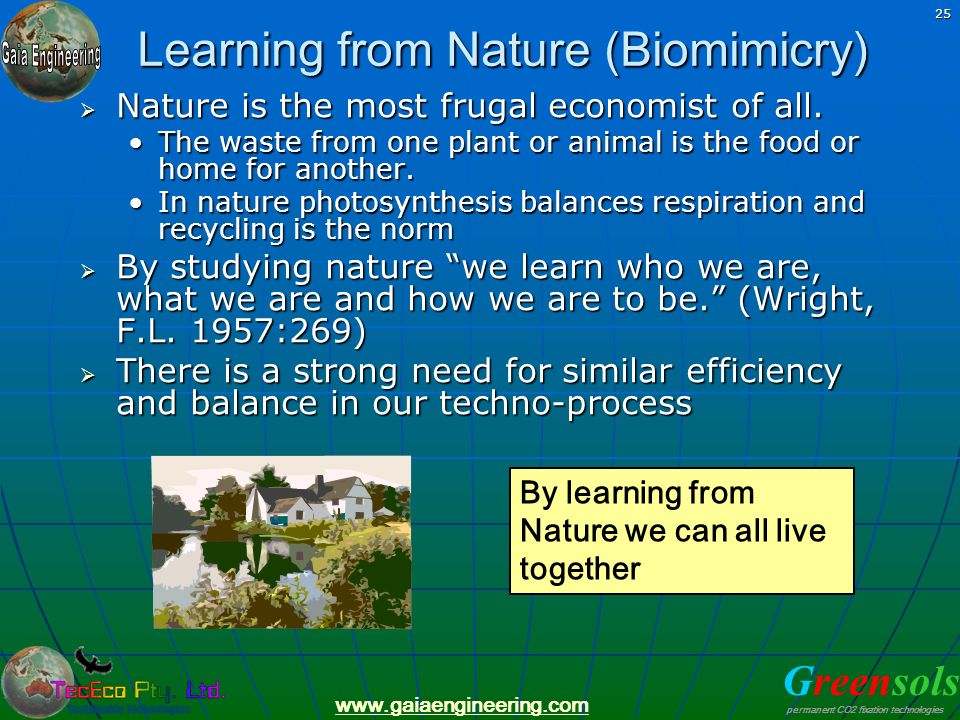
“With the onward march of science and technology, and the continuing quest for improvement, there is a growing curiosity about the world around us. The structures in nature are great lessons for human study. Only the most successful structural forms have survived. The resourcefulness of material use, conformity with mathematical proportion, underlying structural systems, and the profound capacity to respond to a variety of climatic and environmental forces, make natural forms tremendous exemplars to numerous aspects of our life. Close examination of structures in nature can be rewarding and surprising. “Doing it nature's way”, as shown below, has the potential to change the way we live for the better.
Biomimicry (from bios, meaning “life,” and mimesis, meaning “to imitate”) is a design principle that seeks sustainable solutions to human problems by consulting and emulating nature’s time- honoured patterns and strategies. According to Janine Benyus (2002), author of the groundbreaking book Biomimicry, the core idea is that nature, imaginative by necessity, has already solved many of the problems we are grappling with. Using nature’s principles allow us to create products, processes, and policies that are well- adapted to life on Earth over the long haul.”...Continue to read: Biomimicry: Learning from Nature
Destruction of nature as dangerous as climate change, scientists warn
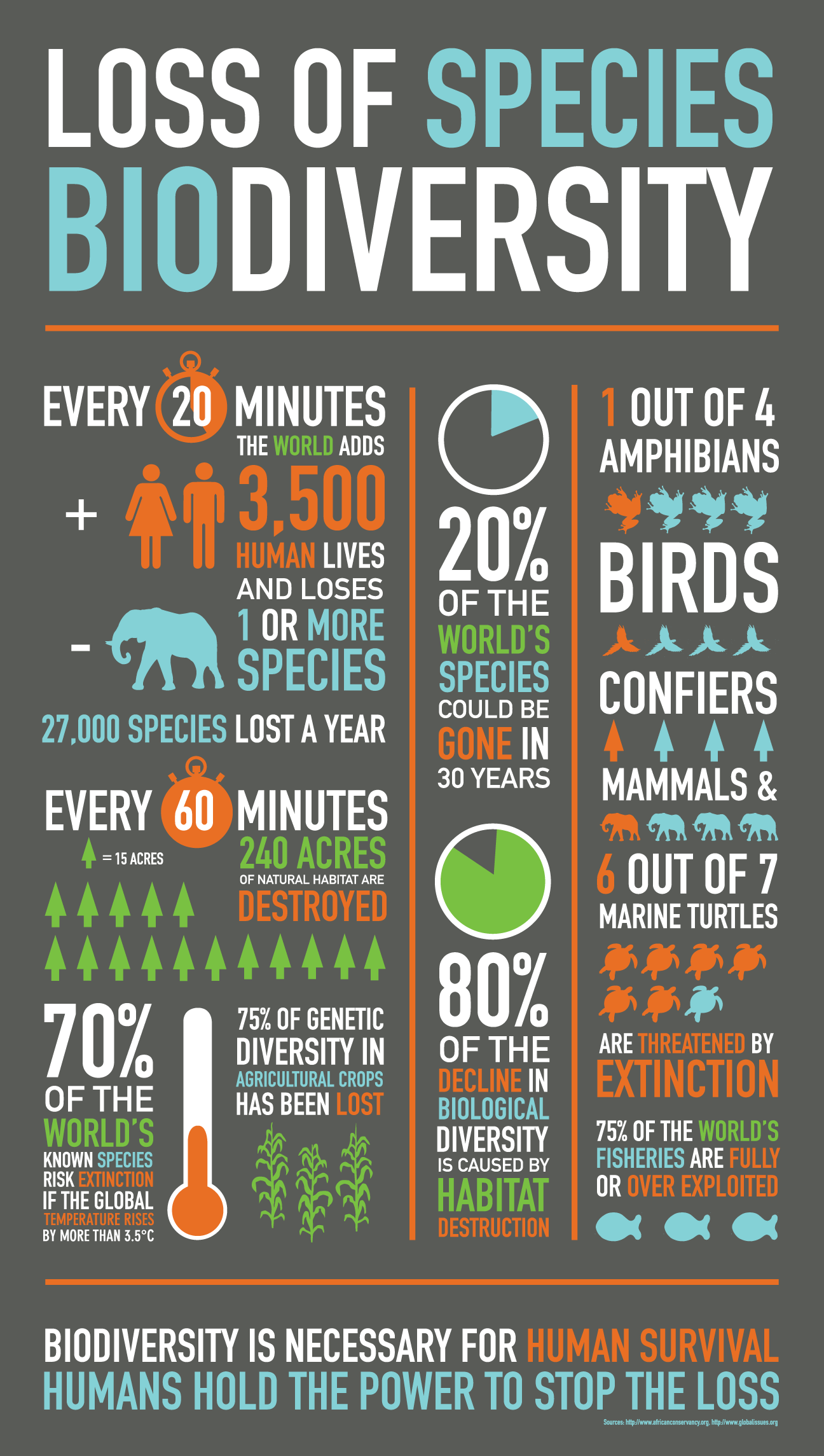
Photo:behance.net
‘Human destruction of nature is rapidly eroding the world’s capacity to provide food, water and security to billions of people, according to the most comprehensive biodiversity study in more than a decade.
Such is the rate of decline that the risks posed by biodiversity loss should be considered on the same scale as those of climate change, noted the authors of the UN-backed report, which was released in Medellin, Colombia on Friday.
Among the standout findings are that exploitable fisheries in the world’s most populous region – the Asia-Pacific – are on course to decline to zero by 2048; that freshwater availability in the Americas has halved since the 1950s and that 42% of land species in Europe have declined in the past decade.’...Continue to read
What is biodiversity and why does it matter to us?
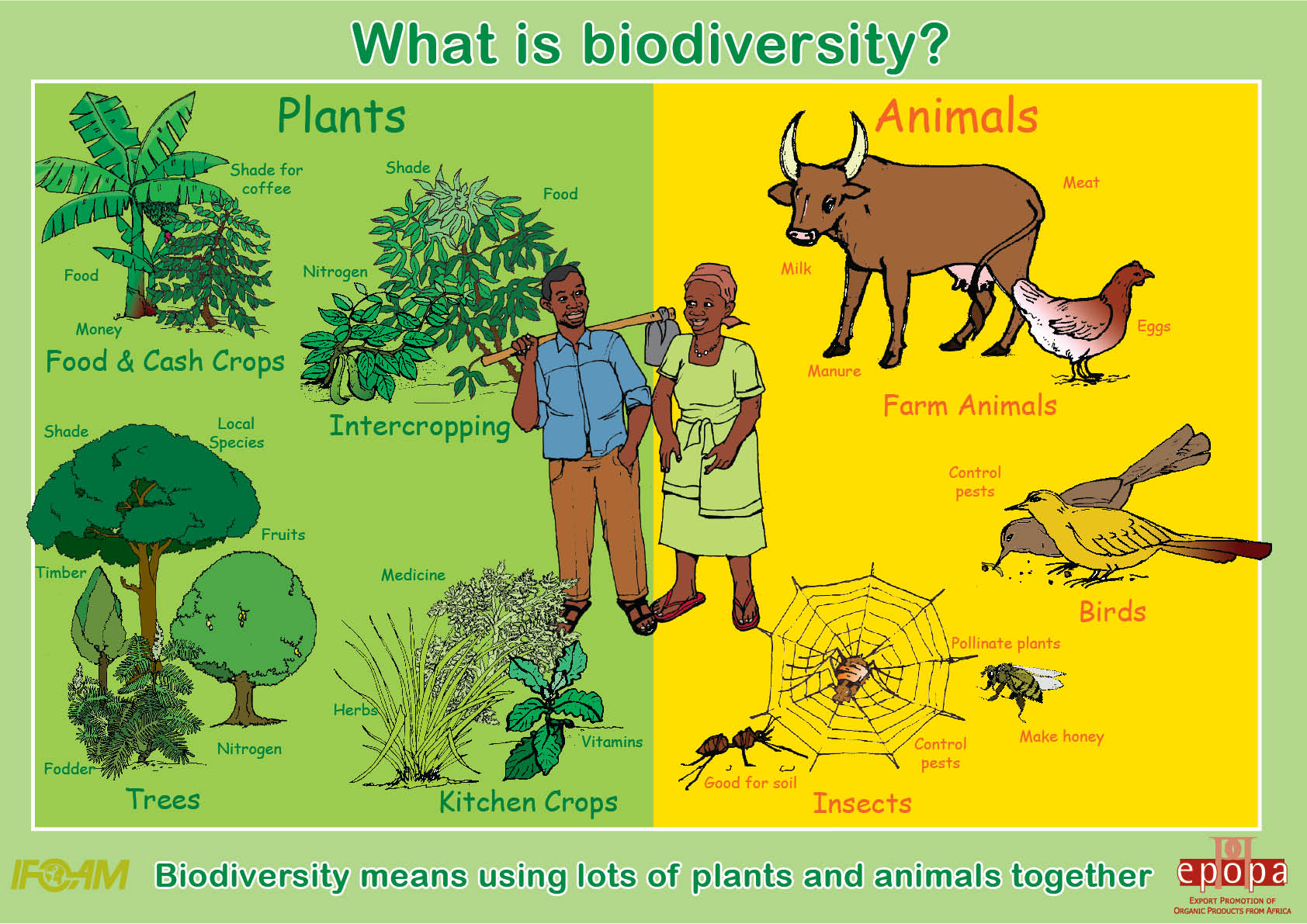
Photo:justforests.org
‘The air you breathe, the water you drink and the food you eat all rely on biodiversity, but right now it is in crisis – because of us. What does this mean for our future and can we stop it?’
‘It is the variety of life on Earth, in all its forms and all its interactions. If that sounds bewilderingly broad, that’s because it is. Biodiversity is the most complex feature of our planet and it is the most vital. “Without biodiversity, there is no future for humanity,” says Prof David Macdonald, at Oxford University.
The term was coined in 1985 – a contraction of “biological diversity” – but the huge global biodiversity losses now becoming apparent represent a crisis equalling – or quite possibly surpassing – climate change.
More formally, biodiversity is comprised of several levels, starting with genes, then individual species, then communities of creatures and finally entire ecosystems, such as forests or coral reefs, where life interplays with the physical environment. These myriad interactions have made Earth habitable for billions of years.
A more philosophical way of viewing biodiversity is this: it represents the knowledge learned by evolving species over millions of years about how to survive through the vastly varying environmental conditions Earth has experienced. Seen like that, experts warn, humanity is currently “burning the library of life”...Continue to read
Nota bene
England's privatised water firms paid £57bn in dividends since 1991
'English water companies have handed more than £2bn a year on average to shareholders since they were privatised three decades ago, according to analysis for the Guardian.
The payouts in dividends to shareholders of parent companies between 1991 and 2019 amount to £57bn – nearly half the sum they spent on maintaining and improving the country’s pipes and treatment plants in that period.
Critics say while continuing to pay huge dividends they have failed to carry out significant national infrastructure works to improve the water and sewerage system.
When Margaret Thatcher sold off the water industry in 1989, the government wrote off all debts. But according to the analysis by David Hall and Karol Yearwood of the public services international research unit of Greenwich University, the nine privatised companies in England have amassed debts of £48bn over the past three decades – almost as much as the sum paid out to shareholders. The debt cost them £1.3bn in interest last year.
Hall concludes the companies have borrowed to pay dividends, rather than to invest in infrastructure projects. The £123bn of capital expenditure spent by the companies has all been financed by customer bills, the analysis states.
“A large amount of debt has been borrowed. But since the revenue from user charges covered capital expenditure, this debt has been used to finance dividends rather than capital expenditure,” Hall said...'- Continue to read
Fat Cats: Listen to Me and Be for the Common Good
Read more:
The Broken Economic Model and the Inhumanity of the Lost Decade of Austerity
Selling off our Motherland: The Biggest Crime of the Broken Economic Model
‘Fix a broken economic system: It’s time to rethink that for the good of society’
Is Neoliberal Economics and Economists 'The Biggest Fraud Ever Perpetrated on the World?
Desperately seeking Sophia: The Wisdom of Nature
Sustainable Development Goals: Where is the Common Good?
The inhumanity and inefficiency of the privatised and for profit justice reconfirmed
‘Nature and Me’: Realigning and Reconnecting with Mother Nature’s Wisdom- A Five Part Guide
Crisis after Crisis: Ten Steps to Save the World
For a selection of related and complementary articles visit my Wisdom Corner
